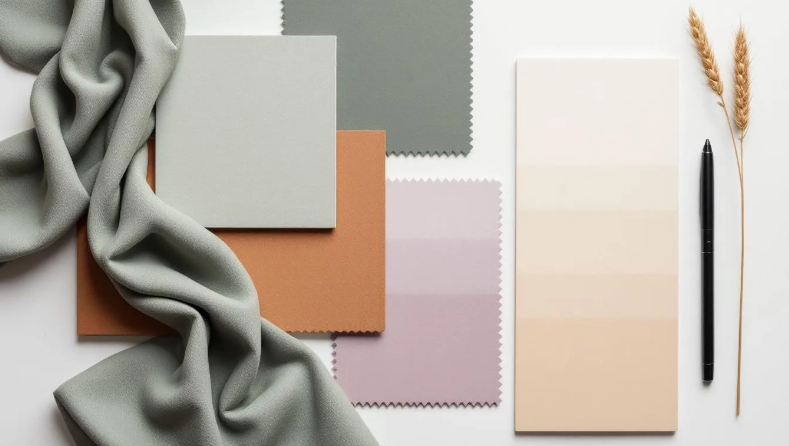Choosing the right card stock for your printing project can significantly impact the final result. Among the various paper options, glossy and matte stand out as two of the most popular choices, each offering unique benefits and distinct characteristics.
In this blog, we will explore glossy and matte, examining their differences, best uses, and pros and cons of each. Whether you’re a seasoned designer, a business owner, or someone working on a personal project, understanding the differences between these two types of paper will help you make an informed decision that best suits your needs.
Let’s explore the differences between matte and glossy paper and determine which is the perfect choice for your next print endeavor.
What is a Matte Card Stock
Matte provides a non-glossy, smooth surface when printing. It absorbs ink well without producing a shiny or reflective finish.
Matte has a texture that diffuses light, giving it a soft, elegant appearance. It is often the preferred choice for professional and artistic projects.
Matte maintains a clean look, unlike glossy card stock, which can easily show fingerprints and smudges. It is less glare-prone, making it ideal for reading and viewing under different lighting conditions.
Matte card stock is commonly used for business cards, brochures, posters, and photographs, where a more sophisticated and subtle finish is preferred.

The Advantages of Matte Finish
There are advantages and disadvantages to matte card stock. In the following section, we will examine the pros and cons of matte finishes.
Elegant Appearance
Matte paper offers a refined, elegant appearance, making it ideal for formal purposes like wedding invitations and professional materials such as business cards and brochures. Additionally, due to its elegant appearance, matte paper is often used for fine art prints.
No Glare
The non-reflective nature of matte paper minimizes glare, making printed text and images easier to read in various lighting conditions. This quality is especially advantageous for brochures and informational materials intended for different settings.
Resistance to Fingerprints and Smudges
This card stock offers the distinct benefit of being resistant to fingerprints and smudges. Unlike glossy card stock, which tends to show every touch, the textured surface of matte conceals these marks, ensuring your printed materials look clean and polished even with frequent handling.
This quality is especially beneficial for items circulated or prominently displayed, such as business cards, brochures, and wedding invitations, guaranteeing a professional and flawless appearance over time.
Smooth Texture
The texture adds a luxurious quality to your printed materials. This soft, smooth texture enhances the overall quality and experience of products like business cards and invitations, making them visually appealing and pleasant to touch. The refined texture of matte can leave a lasting impression, conveying a sense of sophistication and elegance that elevates your printed materials.
Better Readability
The absence of gloss on matte prints guarantees that the text is sharp and easily legible, making it crucial for brochures and business cards, where effective communication is key.
Versatile Aesthetic
This choice complements various styles, from minimalistic and modern to classic and traditional, making it suitable for different printing projects.
Matte is an excellent choice for printing products that desire a refined, high-quality appearance and practical functionality.
The Disadvantages of Matte Finish
Although matte-finish offers numerous advantages, a few things to keep in mind depend on what you're printing.
Duller Colors
Matte card stock absorbs ink more, making colors look less vibrant than glossy finishes. This might not work for projects needing bright, eye-catching visuals, like marketing materials, photo prints, or designs where bold color is crucial. If your project depends on striking colors, go for a glossy finish. Glossy print can make colors more vibrant and provide a classic look, but it may not be suitable for areas with bright light, frequent handling, or low contrast/subtle gradient images.
Less Sharpness
When you select matte, the higher ink absorption slightly reduces image sharpness and fine detail. This means that intricate designs and high-resolution photographs might not appear as crisp and defined as they would on glossy paper.
This potential loss of sharpness can be a significant drawback for projects where clarity and precision are essential, such as detailed artwork, professional photographs, or designs with intricate patterns. Consider a different finish if your project requires the highest level of detail and clarity.
Not Suitable for Every Project
While matte paper offers a refined, understated look, there might be better choices for some types of printing projects. Its subtle, non-reflective quality can make it less effective for projects that need to catch the eye with bold and shiny visuals, like advertisements or promotional materials.
If you aim to create a striking, attention-grabbing piece with vivid colors and a glossy finish, matte paper might not deliver the desired impact. It's important to consider your project's specific needs and whether the sophisticated, muted appearance of matte paper aligns with your objectives.
Understanding these disadvantages can help you decide whether a matte is the right choice for your specific printing project.

What is a Glossy Finish?
Glossy is all about making a statement. It’s the life of the printing party, commanding attention with its shiny, smooth surface. This distinctive look is achieved through a heavier coating, usually composed of a special varnish or polymer that reflects light.
Consider glossy as the spotlight for your visuals. It enhances regular photos and graphics, causing them to stand out and attract attention. However, keep in mind that, like a star, glossy finishes can
Vibrant Colors
Glossy print significantly enhances color saturation, resulting in exceptionally vivid and eye-catching images and graphics. The reflective surface of glossy paper amplifies the depth and richness of colors, making them pop off the page.
The heightened vibrancy is especially useful for projects that require a strong visual impact, like marketing materials, prints (glossy photo paper), promotional flyers, and business cards. The improved color reproduction ensures that each hue and shade is displayed vividly, leaving a memorable and striking impression.
To learn more about the importance of colors in marketing, visit our blog, which showcases the top colors and their meanings.
Sharp Details
The glossy finish's smooth, reflective surface is ideal for high-resolution printing, allowing for the reproduction of exceptionally crisp and clear details. This makes it perfect for projects requiring fine precision, such as photographs and detailed designs.
The glossy finish enhances the clarity of lines and edges, ensuring that every detail is captured with sharpness and accuracy, no matter how small. Whether you're printing intricate artwork, professional photographs, or complex graphic designs, glossy provides that the details of your design look beautiful, giving your work a refined and professional look. The high level of detail achievable with glossy paper makes it a top choice for anyone looking to showcase their visuals with the utmost clarity and precision.
Professional Appearance
When it comes to projecting professionalism, a glossy finish shines. The smooth, reflective surface exudes a touch of sophistication that elevates your branding and marketing materials. Think brochures, flyers, and presentations – glossy paper captures people's attention and makes a lasting impression.
Glossy's ability to enhance visual impact makes it a perfect choice for showcasing your brand or capturing those unforgettable memories.
Protective Coating
A glossy finish serves a dual purpose! It enhances your pictures and provides a protective layer. It helps ward off scratches and even moisture, making your prints more robust for display or handling. This additional protection guarantees that your cherished memories or striking posters remain vibrant for longer.
Disadvantages of Glossy Finish
While glossy has numerous advantages, there are a few drawbacks to consider.
Fingerprints and Smudges
The smooth surface of glossy paper is susceptible to fingerprints, smudges, and oil marks, which detract from the overall appearance of the prints. Extra care is required to avoid leaving unwanted marks when handling glossy prints.
Unwanted Glare
The glossy nature causes glare and reflections in direct light, making it difficult to view prints from certain angles. This means that displaying or viewing glossy finishes in well-lit environments can be challenging.
Less Texture
Shiny photos or prints have smooth and slick surfaces, lacking the tactile texture and feel offered by matte paper. If you prefer a tactile and textured experience, glossy finish and prints do not provide this feeling.
Not Ideal for All Projects
Glossy excels at showcasing vibrant visuals, making it perfect for marketing materials, brochures, and wedding photos. However, its reflective nature can be a double-edged sword.
Glare and reflections can become an issue for text-heavy documents. Matte’s ability to minimize glare makes it the preferred choice in those situations. Additionally, a glossy finish might not be ideal for black-and-white photos due to its reflective nature.
Conclusion
Deciding between a glossy and matte finish in printing and photography significantly influences the final product.
Understanding the pros and cons of each type is important for making the best decisions tailored to your specific needs and goals of the print project.
There is no universal answer when selecting between a glossy or matte finish; the best choice depends on the particular project and personal preferences.
It's important to experiment with both types to discover their unique outcomes. This exploration can lead to exciting results that perfectly suit your business needs.




